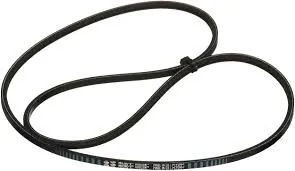- Arabic
- French
- Russian
- Spanish
- Portuguese
- Turkish
- Armenian
- English
- Albanian
- Amharic
- Azerbaijani
- Basque
- Belarusian
- Bengali
- Bosnian
- Bulgarian
- Catalan
- Cebuano
- Corsican
- Croatian
- Czech
- Danish
- Dutch
- Afrikaans
- Esperanto
- Estonian
- Finnish
- Frisian
- Galician
- Georgian
- German
- Greek
- Gujarati
- Haitian Creole
- hausa
- hawaiian
- Hebrew
- Hindi
- Miao
- Hungarian
- Icelandic
- igbo
- Indonesian
- irish
- Italian
- Japanese
- Javanese
- Kannada
- kazakh
- Khmer
- Rwandese
- Korean
- Kurdish
- Kyrgyz
- Lao
- Latin
- Latvian
- Lithuanian
- Luxembourgish
- Macedonian
- Malgashi
- Malay
- Malayalam
- Maltese
- Maori
- Marathi
- Mongolian
- Myanmar
- Nepali
- Norwegian
- Norwegian
- Occitan
- Pashto
- Persian
- Polish
- Punjabi
- Romanian
- Samoan
- Scottish Gaelic
- Serbian
- Sesotho
- Shona
- Sindhi
- Sinhala
- Slovak
- Slovenian
- Somali
- Sundanese
- Swahili
- Swedish
- Tagalog
- Tajik
- Tamil
- Tatar
- Telugu
- Thai
- Turkmen
- Ukrainian
- Urdu
- Uighur
- Uzbek
- Vietnamese
- Welsh
- Bantu
- Yiddish
- Yoruba
- Zulu
Nov . 04, 2024 21:47 Back to list
automotive drive belts
Understanding Automotive Drive Belts A Comprehensive Overview
Automotive drive belts play a crucial role in the functioning of a vehicle's engine and accessory systems. These belts are essential components that transfer power from the engine's crankshaft to various accessories, including the alternator, power steering pump, water pump, and air conditioning compressor. Understanding the types, functions, and maintenance of drive belts can help car owners to ensure their vehicles operate efficiently and reliably.
Types of Drive Belts
There are mainly two types of drive belts used in modern vehicles the serpentine belt and the timing belt.
1. Serpentine Belt The serpentine belt is a long, flat belt that wraps around multiple pulleys attached to the engine and its accessories. It is designed to drive various components simultaneously, making it more efficient than the older V-belt systems, which often used multiple belts for different accessories. Serpentine belts are typically made from rubber and reinforced with polyester, providing durability and flexibility. Most modern vehicles utilize a single serpentine belt because of its simplicity and lower maintenance requirements.
2. Timing Belt Unlike the serpentine belt, the timing belt is specifically responsible for synchronizing the rotation of the crankshaft and camshaft(s). This synchronization is crucial for ensuring that the engine's valves open and close at the correct times during the engine's cycle. Timing belts are usually made from a blend of rubber and fiberglass, enabling them to withstand high temperatures. Depending on the manufacturer and model, timing belts may need to be replaced every 60,000 to 100,000 miles to prevent engine damage.
Functions of Drive Belts
The primary function of drive belts is to facilitate the transfer of mechanical energy from the engine to various components. Each type of belt serves a specific purpose
- Serpentine Belt Powers accessories such as the alternator (which generates electrical power), power steering pump (which provides hydraulic pressure to the steering system), water pump (which circulates coolant to maintain the engine temperature), and air conditioning compressor (for the AC system).
automotive drive belts

- Timing Belt Ensures the precise timing of the engine's internal components, essential for maintaining engine performance and efficiency. A failure of the timing belt can result in severe engine damage, often leading to costly repairs.
Maintenance and Replacement
Regular maintenance of drive belts is essential for vehicle performance. A worn or damaged belt can cause a decrease in performance, leading to potential breakdowns. Here are some tips for maintaining and inspecting drive belts
1. Visual Inspection Periodically check belts for signs of wear such as cracks, fraying, or glazing. Any noticeable damage may indicate the need for replacement.
2. Listen for Sounds A squeaking or squealing sound may indicate that the serpentine belt is loose or worn. Timely attention to these sounds can prevent further damage.
3. Consult the Owner’s Manual Manufacturers set specific replacement intervals for drive belts. It's important to refer to your vehicle's owner’s manual for guidance on when to replace the belts.
4. Professional Inspection Regular inspections by a qualified mechanic can help ensure that belts are in good condition. Mechanics can also check the tension of the belts and make necessary adjustments.
Conclusion
In conclusion, automotive drive belts are essential components that significantly impact vehicle performance and reliability. Whether it's the serpentine belt that powers multiple accessories or the timing belt that synchronizes engine functions, understanding their roles helps car owners manage their vehicle maintenance more effectively. By staying vigilant about inspections and adhering to replacement schedules, drivers can ensure their vehicle runs smoothly and prevent the costly repercussions of belt failures. Proper attention to these vital components not only enhances vehicle longevity but also contributes to safety on the road.
-
Upgrade Power Steering Pump Belt for Smooth, Quiet Operation
NewsAug.27,2025
-
Precision Timing Belt & Chain: Engine Performance & Durability
NewsAug.26,2025
-
Precision Lathe Drive Belts: Durable & Reliable Performance
NewsAug.25,2025
-
84.5 Serpentine Belt: Durable & Precision Fit for Your Engine
NewsAug.24,2025
-
Premium Ribbed Drive Belts for Quiet Power Transmission
NewsAug.23,2025
-
High-Performance Vehicle Timing Belt for Engine Precision
NewsAug.22,2025

